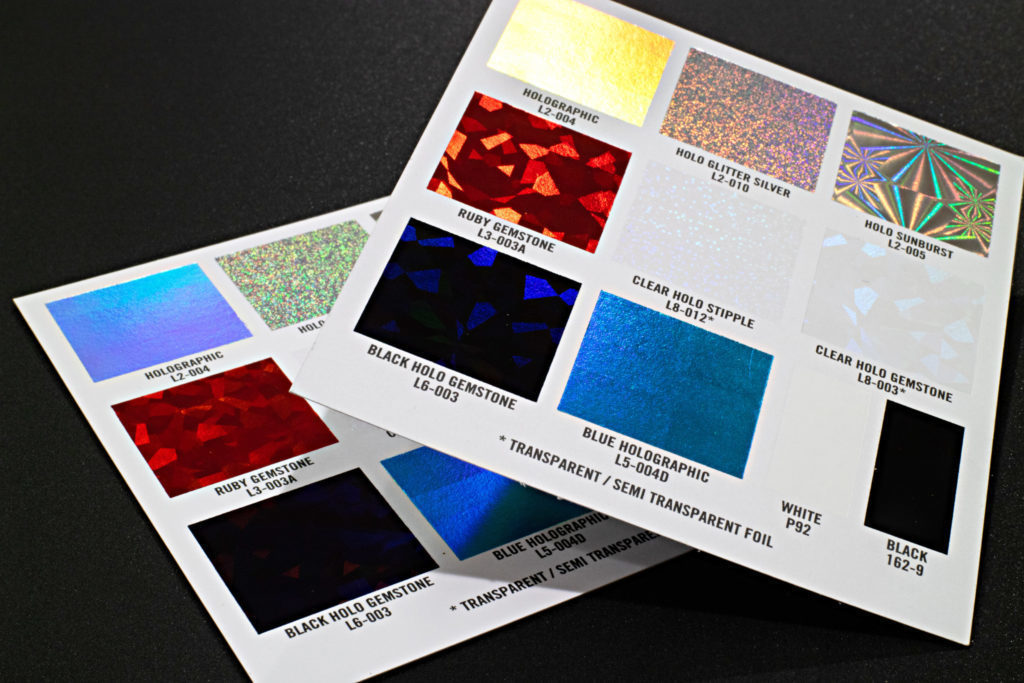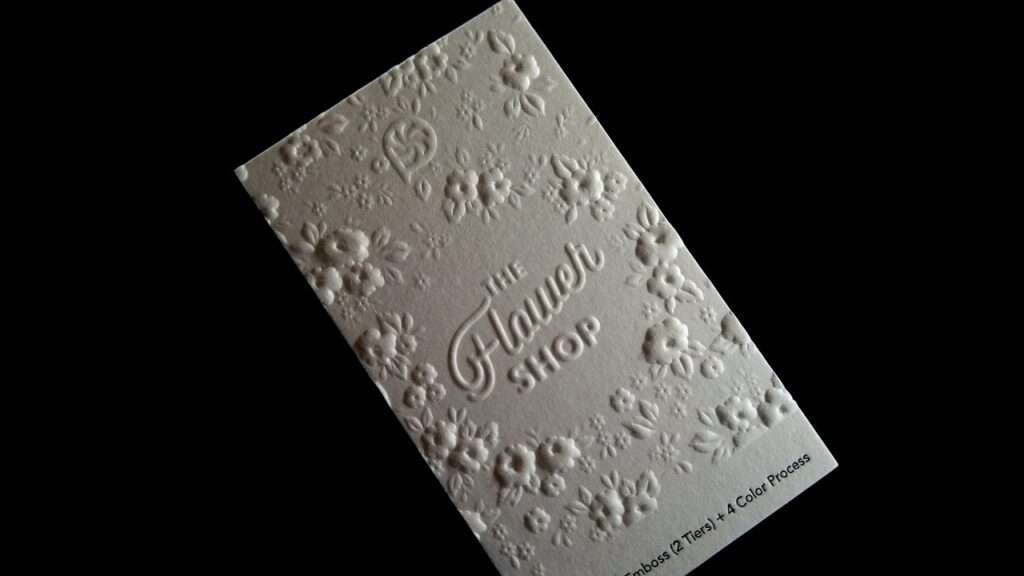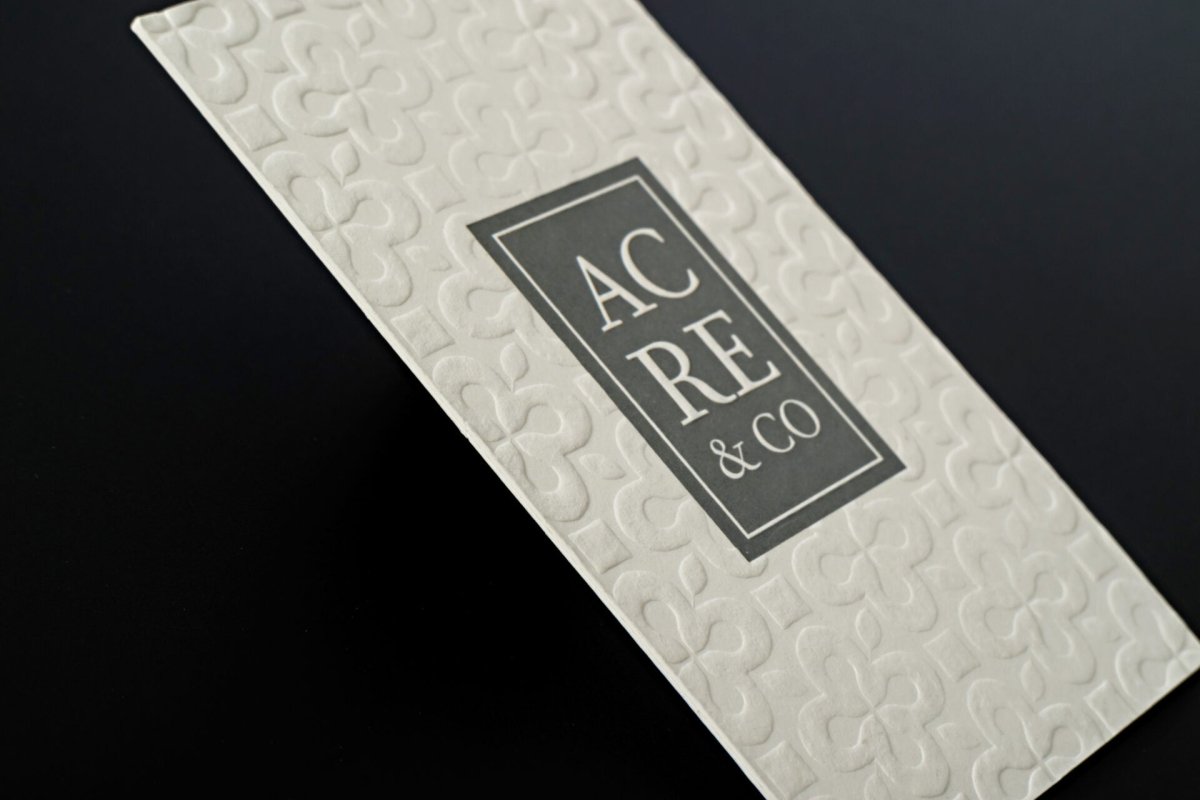
How to Pick the Best Font and Size for your Business Card
adminShare

Size matters! Well, at least we know this to be true for the font of your business card. Too big and it all that you want to convey won’t fit into the card. Too small and people are going to find it difficult to even read what is written on it!
Yes, you see now how size does matter. But don’t worry; we aren’t here to inform you at relative intervals about the importance of font size. What we are going to talk to you about is how to pick the best business card font size.
Are you using too small fonts?

Think picking small fonts lets you cram up as much information as you can in a 3.5 x 2-inch rectangle? Yes, it does serve the purpose. But we can also assure you that no one is going to even attempt to read what is on your card.
How small is too small? To know this, you first need to decipher the size of the business card. When picking a business card font size, remember:
- Too big and you take up important business card real estate
- Too small and it is hard to read even if a card is generally viewed up close
So what exactly is the ideal size?

- A font size of 10 to 11 pt is ideal for the body of the text
- A font size of 7 to 8 pt is ideal for contact information
This is not a rule of thumb as it all depends on the design.
How does design play a vital role?

You can determine your business card font size by paying attention to layout and design.
- If you want to emphasize information, opt for larger and bolder fonts
- If you run out space, think about opting for double-sided cards
Rounding up on the ideal font size
Coming to a conclusion on the best font size of your business card ultimately depends upon:
- Pay attention to the card design
This needs to be altered and adjusted after you take into account the layout of the business card
- Take into account branding guidelines
Pay attention to a certain kind of font your brand may be using. It may not look good when it is small
- Content is key
If there is a lot of content you have to fit into your card, don’t go for smaller font size. Pick a bold font-weight if it is important
Fonts that help you score with a business card
There are some fonts that are clear winners when you spot them on a business card. If you don’t have brand style specifics to follow when picking fonts, here are a few font styles you can choose from. They certainly make reading a less laborious task.
Sans Serifs
- If the font-weight is thick enough, Sans Serifs is the easiest to read
- It does not come with redundant flourishes
- You obtain straight, neat and clean lines that leave you with clutter-free text
- You can use this font at smaller sizes and not lose much
Handy tip: Sans Serifs is the ideal font for professional business cards. It comes with rounded tails and neat upper case letters that give it a classy and formal look and feel.

Serifs
- Serif fonts possess small decorative bars at the ends of every character
- It can be a little difficult to read than serifs
- It has a more formal typewriter-like appeal
- These fonts are generally larger than plain Sans Serif fonts
Handy tip: Times New Roman is an effective font style too. It is easy to read. Even though it is a more common font, you can use variations and styling options such as italics to add a more unique look. Use it for the plainer areas of your card. For instance, contact information.
Scripts or Specialty fonts
- Scripts and some specialty fonts are difficult to read
- Utilize them in moderation, enough just to get across your branding properly
- Make them large in size so that it becomes easy to read
Handy tip: Karat has just the dash of an informal vibe that goes well with a relaxed and casual brand image. It possesses curved letters that give it a more playful appeal. It is ideal for an informal audience.
Other elements to pay attention to

Besides business card font size, you also need to take into account, colors, concepts, typeface, images, shapes and fonts.
Materials
- If you are going for conventional material, paper, cardstock or plastic are good options
- If you are going in for unconventional material, pick something relevant to your business
Colors
- Opt for colors that are relevant to your brand
- The color mode you use for printing is also vital
Concept
- See that it is systematically planned and detailed
- Know your target audience and how you want them to look at your business
Fonts and typefaces
- Go in for easy to read fonts
- Think about making use of power fonts
- Limit your text styles to two types of font
Patterns and Images

- When picking an image, keep the position and overall balance of your business card at top priority
- Patterns are easier to incorporate but see that you go for the ones that suit your overall design and brand
Fonts are a tool that communicates the voice and tone of your brand. It pays to pay attention to them. Know how the fonts you pick appear when printed in color and size.
Business cards may look small but boy they can be tough to design. But there you go. Designing your business card won’t put you into a depression anymore with these handy tips.
How do you know you picked the right font size? It’s simple when you have the right sizes spot on even as the final product is an extension of your brand, you will know.
When designing the perfect business card for you or your business, there are many things that you should consider — colors, paper quality, logos, what information to include, as well as other details. In particular, one of the most overlooked aspects of business card design is probably font selection.
Picking the right font can be essential for a huge number of reasons.
First and foremost, fonts are designed to help the text become easier to read. Some fonts are tailored to headlines, while others work well in small, fine print. Other fonts might look very good on a computer screen but might actually perform quite poorly on paper.
There are so many font choices out there, and it is crucial to spend some time and think about what would work best for you in any situation.
Keep reading to learn more about the ten most inspirational fonts to use on any business card design.
1) Helvetica

As one of the most popular fonts out there, Helvetica is a modern classic for a reason. This particular font works great for headlines, as well as regular texts. It is designed to maximize reader-friendliness, and it owes its aesthetics to the minimalism current of the mid-20th century, which went on to shape modern design and typography in a very significant way. Helvetica is often considered one of the most reader-friendly fonts out there, and its variations are popular in marketing copy, as well as business cards and packaging. Helvetica was designed around 1950, but it actually translated quite well to the modern digital world. In other words, this is one of those "you can't go wrong" kind of fonts. It is easy to get very good results using this one.
2) Arial Black

This might be one of the most well-known fonts out there. Some designers tend to avoid it because they might think that it is overused, but you would be very surprised to see how many major brands still heavily rely on this font or one of its many variations. What makes Arial Black and his "cousins" so special is that this is a font family that is easy to read and always classy and elegant. If you want to give your business cards a timeless, effortlessly classy vibe, while still maintaining an iconic feel, this might be the best choice for you. Moreover, Arial Black works really well for headlines, because it responds well to thicker lettering, which is meant to stand out even against a messier background.
3) Plantin

This font is one of the most popular options when it comes to business card designs. It has been developed in the early 1900s, and it became immediately popular as a font used in book editions. It has a serif-based look, although it is still very easy to read. What makes this font special is that it actually was designed to perform well in fine print so that publishers back in the day could fit more words in fewer pages. This would enable them to save money when printing books, instead of using a different font, which would require more pages. Although business cards do not feature the same amount of content that you would expect from a full novel, some people might still need to include a significant amount of content into their business cards, such as contact information, URL links, mission statements, and so on. This font can be an excellent choice for those people ore businesses who are looking to add some extra information to their cards and maximize their space. This font will allow you to feature more text without the overwhelming feeling of a cluttered business card.
4) Lapture

This font is perhaps one of the most exotic entries on this list thus far. Although it is not wildly over the top, it features some unique appointments and geometric aesthetics, which could add a special character to your business card. This font might not be suitable for phrasing or longer sentences, but it is very good for headlines since it has a bold and iconic vibe to it. This font is becoming increasingly popular when it comes to business card designs, and it is definitely becoming a growing trend in the industry. This serif design is particularly useful to people who want to add some extra character to their business cards, without necessarily giving up on traditional elegance. Blurring the lines between classic and modern, this font could be a great compromise between these two styles.
5) Clarendon

This particular font is so widely used that it is quite hard to believe that it was actually designed in the nineteenth century! It has a slightly gothic appearance, but it is still quite formal and classic in its appearance, embracing a minimalistic feel. This particular font is often associated with high-end looks, and this is the reason why it is a popular option for people and businesses looking for a font that will help them concoct a more upscale image for their brand. This font was designed specifically for printing, so it excels at this application, and it is perfect for business cards, as well as other forms of printed media.
6) Akkurat

Modern, fast, youthful, and stripped to the bare essentials; this font is becoming increasingly popular in business card design. It is a fantastic alternative for people who want to give their brand a fresh and cutting edge feel. For this reason, you'll likely find many tech companies, entrepreneurs, designers, or marketing experts using this particular slogan or similar options. Much like the aforementioned Helvetica, this song has its roots in European minimalism and industrial design, although it has a modern spin on such a timeless and iconic style, making it a perfect choice for printing, as well as on-screen reading.
7) Times New Roman

If you ever typed a text on a computer, you are probably familiar with this particular font. It is extremely popular, and it is often considered overused and vanilla. However, it is still seen on so many business cards, and there is a reason why it works. Some people really look to give their brand a more approachable, familiar feel. Using a highly recognizable font is a great way to do that, and Times New Roman serves this concept to perfection. In terms of technical advantages, this font is easy to read, and it is a true staple in the industry.
8) Helvetica Neue

This font is characterized by thin, slender characters. It is perfect for headlines, and it is rooted in the school of European minimalistic design, as its name might suggest. Neue is a more unorthodox choice, and it might not work for everyone or every niche. However, when it works, it truly does make an impact. If you want to give your brand a very punchy, yet luxurious and modern vibe, this one might be exactly what you are looking for. Because the letters are so thin, it is usually recommended to avoid using this font for longer texts or for business cards requiring more content. However, it is perfect for business cards with minimal texts or even for those who get down to the bare essentials, such as names, headlines, and contact information.
9) Verdana

This is another trendy font, found on most computers and used extensively. However, it remains a popular option for business card design, because it translates well to the printed format, and it simply looks nice, without sacrificing functionality overlooks.
10) Futura

Last but not least, we had to mention Futura! What makes this font unique is that it sort of looks like a combination of the minimalistic fonts we talked about in this article (Helvetica, Akkurat…) while also embodying some of the characteristics of more traditional fonts such as Arial, only to mention but a few. Futura looks great on printed content, including business cards!
In conclusion, there are so many font varieties and families out there. Each font serves a specific purpose, and it provides a blend of aesthetic and functional factors.
Ultimately, it is completely up to you to determine how you'd like to use your fonts in your business cards. The best strategy is to have a clear vision from the very start, so you can get a better idea of how the font is going to play into your desired business card layout and color scheme.
If you do not know where to start, you could always look at some business card examples to get some inspiration. There are many fantastic design ideas on the web, many of which are showcased on the web, and could serve you as a valuable reference for your own work.
A font can be an incredibly important aspect of building your brand, and it is definitely something that you should consider with care when you are approaching the design of your business card. In most cases, a business card is going to be somewhat of a first impression for people looking up your work and content. An impressive business card can help your business and enhance the profile of your brand.
Just like in any design project, creating a business card requires a lot of thought and balance.
Remember that a design is only as good as its weakest link. If the font of your business card is simply not cutting it, the whole thing might fall apart! On the other end, the perfect font could easily help you tie the entire vision together with no hassle.



